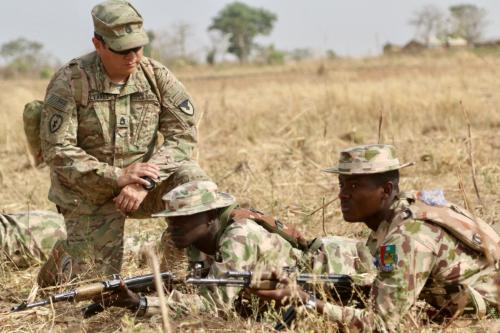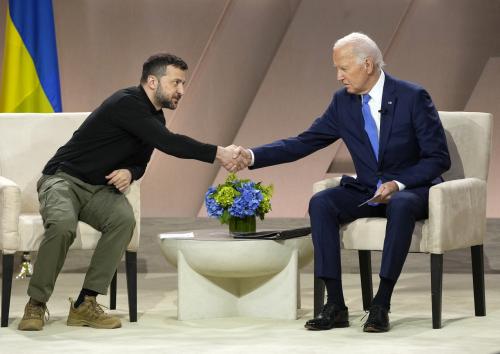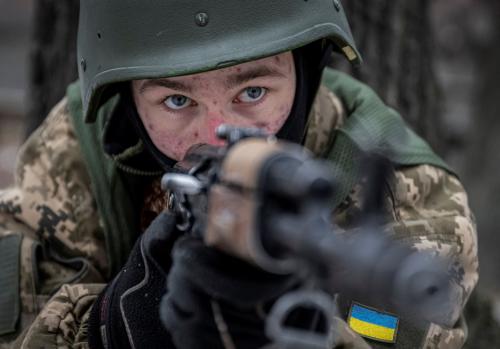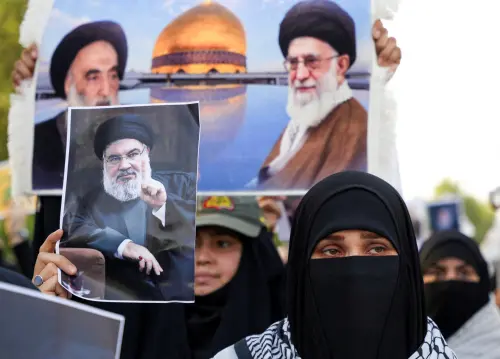Ukraine and its war with Russia have become a central and controversial topic in the 2024 U.S. presidential campaign. The brutal conflict, in which a million people have been killed or severely injured, shows no signs of ending. Kamala Harris is committed to continuing her predecessor’s policy, which involves supporting Ukraine militarily, economically, and politically, and maintaining the sanctions pressure on Russia. U.S. President Joe Biden has said that Ukraine must prevail in this war and that Russia will not win. Donald Trump, who claims the war would not have broken out had he been president in 2022, says he could end it 24 hours after being elected, before his inauguration.
The issue for the American voter is whether the United States should continue to support Ukraine for as long as it takes (as the White House now says) or whether it should pressure Ukraine to negotiate with Russia and end the war without having regained its full territorial integrity. The MAGA Republicans and many progressive Democrats question why it is in the U.S. national interest to pour so much money into supporting Ukraine and favor a rapid end to the conflict.
Trump’s policies toward Russia and Ukraine during his presidency
Both Russia and Ukraine featured prominently during Trump’s first presidency, as I have written elsewhere. Russian interference in the 2016 election consumed a disproportionate amount of domestic energy and Ukraine was the reason for his first impeachment. The former president’s unwavering and extravagant praise for Russian President Vladimir Putin and his assertion that he believed Putin over his own intelligence agencies on the question of whether Russia had interfered in the 2016 election baffled many. Trump promised to improve ties with Russia and to conclude a major arms control agreement. Yet his administration’s record is decidedly mixed. Despite his opposition, waves of sanctions were imposed on Russia both because of its election interference and the poisoning in the U.K. of the ex-GRU double agent Sergei Skripal and his daughter.
Despite Trump’s initial wish to secure a new arms control treaty with Russia, his administration did much to dismantle the 50-year-old arms control regime. The United States pulled out of the 1987 treaty on intermediate-range nuclear weapons and out of the 2002 Treaty on Open Skies. Russia subsequently withdrew from both, leaving the New START treaty as the only remaining agreement regulating the nuclear arsenals of the world’s two nuclear superpowers.
Ukraine and Ukrainians with ties to Russian intelligence played a major role in the events leading up to Trump’s first impeachment trial in January 2020. On the one hand, the Trump administration ended the Obama administration’s ban on supplying Ukraine with lethal defensive weapons in its ongoing hostilities with Russia in the Donbas region, and supplied Javelin anti-tank weapons to Kyiv. On the other hand, Trump told Ukrainian President Volodymyr Zelenskyy that the United States would withhold security assistance to Ukraine unless Ukraine provided damaging information on Joe and Hunter Biden’s business dealings in Ukraine. The leaked contents of this phone call led to Trump’s impeachment.
Biden’s policies toward Russia and Ukraine
Biden came into office saying he was seeking “stable and predictable” relations with Russia, to put “guard rails” around the relationship so that the United States could focus on other pressing issues, particularly China. As his administration draws to an end, U.S.-Russian relations are worse than at any time since the death of Josef Stalin in 1953.
Biden’s first act was to renew the New START treaty on strategic nuclear weapons, which would have expired five days after he came into office. He met with Putin in June 2021 in Geneva, and came away with a moderately optimistic view of the summit’s outcome, although Biden cautioned that “the proof of the pudding is in the eating.” That proof came shortly thereafter, when U.S. intelligence agencies noticed a major Russian military buildup on Ukraine’s borders, eventually concluding a few months later that Russia was mobilizing for a full-scale invasion of Ukraine.
In November 2021, CIA Director William Burns went to Russia to tell top Russian officials that the United States knew what Russia was doing and to warn of the consequences of a full-scale invasion. All to no avail. Russia launched its full-scale invasion of Ukraine on February 24, 2022, and the war continues unabated. Since the war began, the United States has cut off almost all high-level contacts with the Kremlin; imposed rafts of punishing financial, energy, and technology sanctions on Russian entities and on individual Russians; and has assembled a coalition of like-minded countries to jointly pressure Russia to stop the war.
The Biden administration has thrown its full support behind Ukraine. It has to date provided $55.7 billion in security assistance. It has provided $175 billion in economic assistance. There are ongoing debates about what advanced weaponry should be supplied and whether Ukraine can use long-range weapons to strike far into Russian territory. While a significant number of NATO members favor admitting Ukraine into NATO once the war is over, Biden himself has said Ukraine is not ready. The Biden administration’s caution on weapons and NATO membership is driven by a fear of escalation which could ultimately involve the United States in a direct war with Russia. It has repeatedly said that there will be no American boots on the ground in Ukraine.
What would a second Trump administration do on Russia and Ukraine?
Trump has repeatedly claimed that Russia would not have invaded Ukraine had he been president and that he would stop the war 24 hours after being elected. While the first assertion cannot be proven or disproven, the second raises key questions. Trump has not shared any details about how he would end this brutal war of attrition or how he would force both sides to the negotiating table. During the presidential debate with Harris in September, Trump declined to reveal whether he wanted Ukraine to win its war with Russia when he was asked, instead responding, “I want the war to stop,” and urging the two countries to negotiate a deal.
“What I’ll do is I’ll speak to one, I’ll speak to the other, I’ll get them together,” Trump said. Trump and Zelenskyy had a phone call in July, which the former president described as a “very good phone call.” He wrote in a social media post after that call that when he is president, Ukraine and Russia “will be able to come together and negotiate a deal that ends the violence and paves a path forward to prosperity.” He has suggested that lifting the sanctions against Russia will be part of this deal.
Trump has criticized the Biden administration for sending billions of dollars in aid to Ukraine. When the aid became a key issue in Congress earlier this year, with growing opposition from conservatives, Trump pushed for a loan framework for aid to Ukraine, meaning Kyiv would eventually need to repay the funds. At a June rally, he suggested aid to Ukraine would cease if he returned to office. When Trump met with Zelenskyy in September 2024 at Trump Tower, he said, “We both want to see this end, and we both want to see a fair deal made. It should stop and the president (Zelenskyy) wants it to stop, and I’m sure President Putin wants it to stop and that’s a good combination.” He also reminded Zelenskyy that “it takes two to tango.” Despite what Trump said, however, there is no indication that Putin has any interest in negotiating with Zelenskyy short of Ukraine’s full surrender.
Trump’s running mate J.D. Vance has been much more explicitly anti-Ukraine. He has called for an immediate end to assistance and has put forward a peace plan that would involve Ukraine agreeing to demilitarize all the territory currently controlled by Russia and agree to permanent neutrality. He did not say who would control this territory. His plan is similar to that of Putin, who also calls for Ukraine to cede the territory now occupied by Russia and agree never to join NATO.
What would a Harris administration do on Russia and Ukraine?
Harris, who has been associated with the Biden administration’s policies, promised at the Democratic convention in August that she “will stand strong with Ukraine and our NATO allies.”
Harris first met with Zelenskyy at the Munich Security Conference in 2022 a few days before the Russian invasion, warning the Ukrainian leader of the Kremlin’s impending attack and sharing American intelligence that suggested the invasion was imminent as Russian troops were poised to invade. She accused Russia of “crimes against humanity“ the following year. She has met with the Ukrainian leader on multiple occasions since then. She led the U.S. delegation to the Ukraine peace summit in Switzerland in June 2024.
During the presidential debate, Harris highlighted her work in the Biden administration to support Ukraine, claiming that if Trump were still president, “Putin would be sitting in Kyiv right now.”
“Understand why the European allies and our NATO allies are so thankful that you are no longer president and that we understand the importance of the greatest military alliance the world has ever known,” Harris said to Trump, “and what we have done to preserve the ability of Zelenskyy and the Ukrainians to fight for their independence.” She also told Trump that Putin was “a dictator who would eat you for lunch.”
The White House has never been explicit about how it defines winning the war, reiterating that it is up to the Ukrainians to decide when and how to negotiate. While Zelenskyy sought clarification in New York and Washington in late September, it is unclear whether he succeeded. The White House readout of the meeting said “President Biden is determined to provide Ukraine with the support it needs to win.”
The readout of Harris and Zelenskyy’s meeting echoed this. But no one in the White House has defined what winning or prevailing might mean. It appears unlikely, given the current situation on the battlefield, that Ukraine could fully restore its 1991 borders in the foreseeable future.
Zelenskyy came to the United States with a “victory plan,” but its details have not been released. Its focus is the need for more long-range weapons to arrive at a faster pace, for permission to use these weapons to strike further into Russian territory, and for security guarantees from the United States that would be similar to those of NATO’s Article Five collective defense provision. This would leave Ukraine in a stronger position if it were to negotiate with Russia and in fact make some territorial concessions.
Yet, Zelenskyy did not receive permission to strike further into Russian territory and the White House has so far been unwilling to promise the security guarantees Ukraine seeks, because that could involve the United States in a direct conflict with Russia, were it to attack Ukraine again. A Harris administration might well continue Biden’s policy of providing Ukraine with enough support so that it does not lose, but not with the wherewithal to win and eject Russia from Ukrainian territory.
What is the outlook?
On the face of it, it appears that a future Harris administration’s policy toward Russia and Ukraine would represent continuity with that of the Biden administration. Meanwhile, Trump would reverse much of that policy, curtailing U.S. support for Kyiv and forcing it to negotiate a settlement with Moscow that falls far short of its aims in this war.
However, it is impossible to predict before the election what the successful candidate might do. Either would likely request a review of U.S. policy toward Russia and Ukraine and make decisions based on these recommendations. Harris might be more forward-looking on the question of weapons use with Ukrainians. But the opposite might also be true. Trump would surely find it difficult to arrange a swift and successful negotiation to end the war. Events on the ground in Russia and Ukraine will also shape the future president’s decisions, whoever is in the White House, as will the policies of the United States’ NATO allies and Asian partners.






Commentary
How would Trump and Harris handle the Russia-Ukraine war?
October 1, 2024